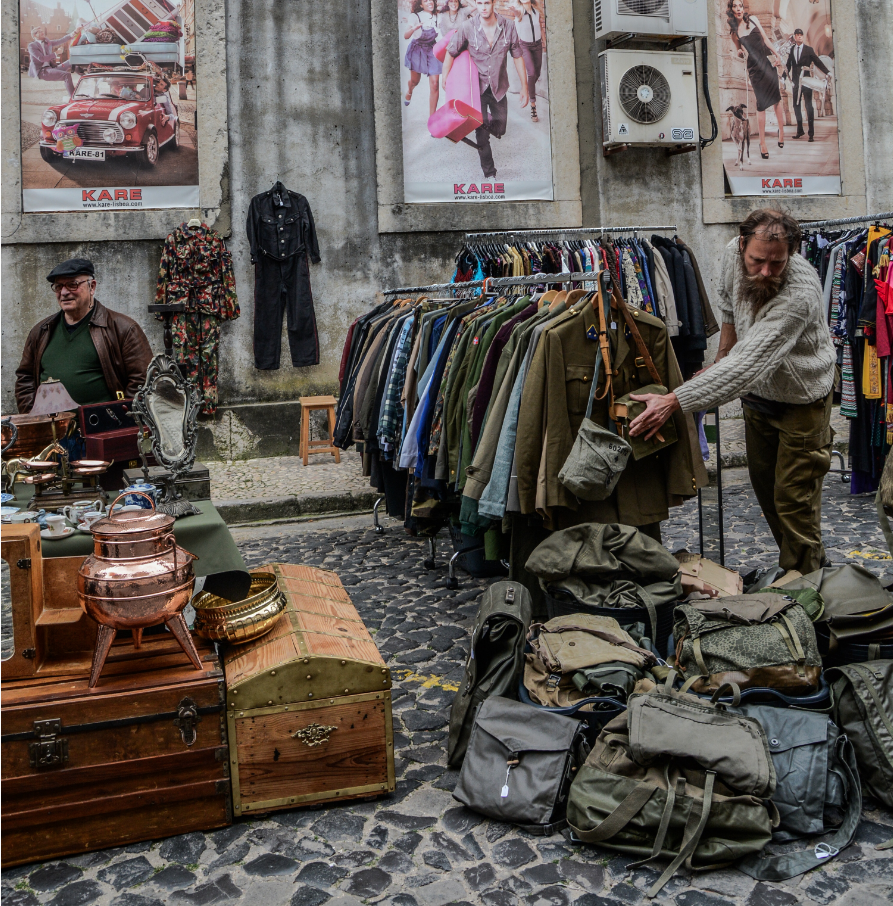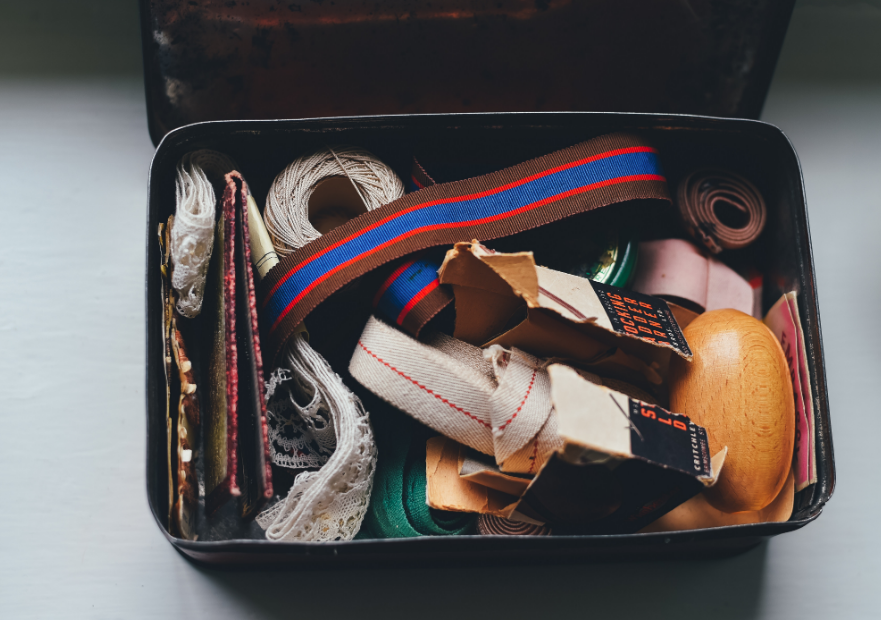In today’s society, convenience is at our fingertips. We live in a world where we can order a jacket online and have it draped over our shoulders the following evening.
With online stores making it so easy for us to make a purchase, it means we’re buying more clothes than ever before, even if we don’t necessarily need them.
However, with great choice also comes great responsibility, spurring us to think about how ethical fast fashion is – and whether we should slow down the pace.
Whilst the choice is there to move fast, there’s also the option to shop slower and more sustainably. Slow Fashion is the movement of buying clothes for quality and longevity, encouraging a more ethical, sustainable and green way of life.
But how is fast fashion diminishing sustainability, and how can slow fashion help?
Let’s take a look.
- What is fast fashion?
- How is fast fashion affecting the environment?
- How fast is fashion really moving?
- What is slow fashion?
- How to shop more sustainably
What is fast fashion?
Fast Fashion is often described as inexpensive, on-trend clothing, that takes inspiration from the catwalk or celebrity culture. Manufacturers are known to mass-produce the popular garments at lightning speed and for a very low cost.
It may seem like a great idea commercially, however in order to keep up the pace and make enough money to survive, environmental corners are being cut – and it’s having a huge impact on our planet.
How is fast fashion affecting the environment
Due to ‘flash in the pan’ trends, and the high number of clothes being made, Fast Fashion brands use cheap, toxic textile dyes in production – so, it’s no surprise that the fashion industry is the second largest polluter of clean water globally after agriculture.
And, if the clothes are being sold for a low cost, you can expect the quality to be low, too. Polyester is one of the most popular fabrics in Fast Fashion, and its effect on the environment is devastating. Derived from fossil fuels, polyester sheds microfibres that add to the increasing levels of plastic in our oceans when it’s put through a wash.
Cotton is also a key offender, having a detrimental impact on the lives of farmers around the world. Sourcing cotton is complex– and fast fashion leaves cotton farmers at bottom end of the supply chain. They aren’t visible to the consumer, and have no power to negotiate with the with the traders.
Cotton farmers aren’t making enough money, meaning they can’t afford to pay for essentials for their families like medicine when they are ill, school fees for their children and even food.
How fast is fashion really moving?
The speed at which garments are produced also means that more and more clothes are disposed of by consumers – who don’t actually even wear them. Research shows around 55% of the clothes in an average woman’s wardrobe and 47% in an average man’s are never worn. That’s around £10.5 billion worth of unworn clothes going to waste – and that’s just in the UK alone.
This is creating a huge amount of textile waste. In the UK alone, 235 million pieces of clothing were thought to have been sent to landfill in spring 2017, with the ‘wear it once’ culture at an all-time high.

The people who pay the price
In the midst of the environmental effects, there’s also ethical issues to consider. Fast Fashion brands pay garment workers, often in deprived countries, low wages and leave them in conditions without basic human rights. Today’s consumers are often unaware of how a quick fire purchase impacts suffering of another human being.
As Fast Fashion increased in recent years, a growing number of activists, petitioners and brands stepped in to raise awareness and lead consumers to a more sustainable way of shopping.
This was the beginning of the slow fashion movement.
What is slow fashion?
Conscious and mindful, Slow Fashion represents sustainability in one unified movement. The movement was steered by Kate Fletcher, from the Centre for Sustainable Fashion. Her 2007 article in The Ecologist took the world by storm, exposing the dangers of fast fashion and the damage it can cause.
It is essentially the opposite of Fast Fashion, and stands for designing, creating, and buying garments for quality and longevity. It encourages slower production schedules, fair wages, lower carbon footprints, and (ideally) zero waste.
Designers who support Slow Fashion create timeless pieces, designed to last a lifetime. They consider the full product life cycle, including the materials used, the human labour and the intention of the garment.
In the same way as slow living, Slow Fashion is holistic and focuses on purpose rather than pace. It goes against the current societal norms that “more is more” and “faster and cheaper are better.”

How to shop more sustainably
The 30 wears test
The Slow Fashion movement is about making the most out of your wardrobe and wearing your clothes in a number of different ways, time and time again. One easy way to adapt to this way of thinking is to do the ’30 wears test’. The #30wears campaign was launched by Livia Firth (Colin Firth’s wife), and proposes that when considering buying something new, you ask yourself “Will I wear this at least 30 times?”
The campaign wasn’t launched to stop us from buying new clothes, isn’t about giving up buying new clothes altogether, it’s simply about changing our approach; viewing clothes as an investment rather than something disposable. By doing this, we can reduce landfill waste and improve our carbon footprint.
Donate your unwanted clothes to family and friends
They say one man’s trash is another man’s treasure, and this rings true for clothes, too. By donating clothes to either family, friends, or your local charity shop, you’re helping others be more sustainable. It stops people from buying new, without taking away the high we get from getting a lovely new item for our wardrobe.
A great way to do this is to have a one-in, one-out policy – live by the mantra that every time you buy something, you’ll donate something else in your wardrobe.
Look after your clothes so they last longer
If you buy something from a Slow Fashion brand, it’s likely to cost a little bit more, and you’re way more likely to respect it. It’s also going to be high-quality, made from sustainable fabric in a workplace where employees are well treated and cared for.
The way you treat your clothes impacts their longevity, so if you care for them and treat them well, they’ll last for decades and you won’t have to replace them.
From caring for your cashmere to washing your denim inside out, go the extra mile to ensure your clothes stay at their best for longer.
Buy the right materials
If you’re confused about which materials to buy, an easy rule to follow is to only buy items cut from natural fabrics you’ve heard of like wool, silk and linen. Fabrics that are made from unnatural fibres are created in labs synthetically, using chemicals like petroleum. These fabrics aren’t biodegradable and, just like polyester, shed microfibres every time they’re washed, inevitably polluting out our waterways.
Shop vintage
Vintage clothes are super stylish, affordable – not to mention a lot of fun. If you want to become a more sustainable shopper, head to your local vintage store and see what gems you can find from years gone by.

Actress and activist, Emma Watson, spoke openly about the sustainability of vintage clothing on her Press Tour Instagram account.
She said: “Every new item of clothing made has a substantial carbon footprint attached to its manufacturing; but the amount of new energy needed to produce vintage clothing is zero,””Vintage clothing has a huge role to play in making fashion more sustainable and reducing a global footprint that includes the 132m metric tons of coal used yearly through the production of new fibers, dyeing and bleaching of garments and the 6-9 trillion liters of water used by the industry.”
Mend and make do
In the 1940’s, the ‘Mend and Make Do’ campaign was launched, encouraging people to learn how to repair their clothes when they rip, or if a button comes loose. Whilst this was initiated due to fabric rationing during the war, the fundamentals of the campaign can be applied to slow fashion, as the principle stays the same.

If you don’t have the time to get behind a sewing machine, or simply don’t have the skills, pay a professional to do it. Think twice before before using it as an excuse for something new.
Wanting to shop more ethically but not sure where to start?
We created Veo – the earth-friendly marketplace to disrupt retail and help you shop better. We made things “effortlessly ethical” just for you.
Slow fashion doesn’t mean your wardrobe has to be drab or boring. Our Fashion and Apparel section is home to thousands of colourful and unique brands.
Browse endless items and give your attire a little more purpose.